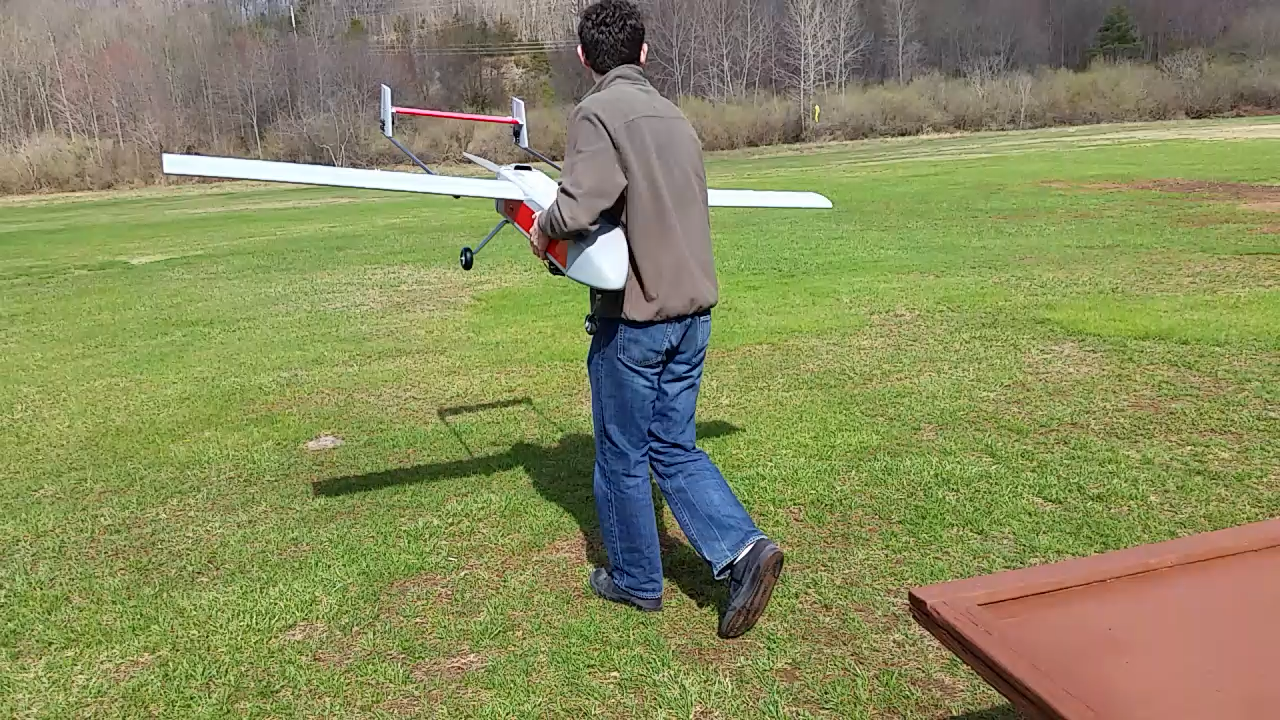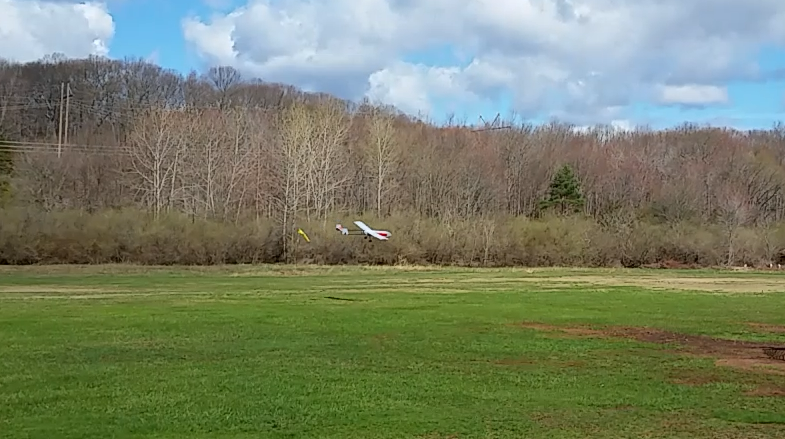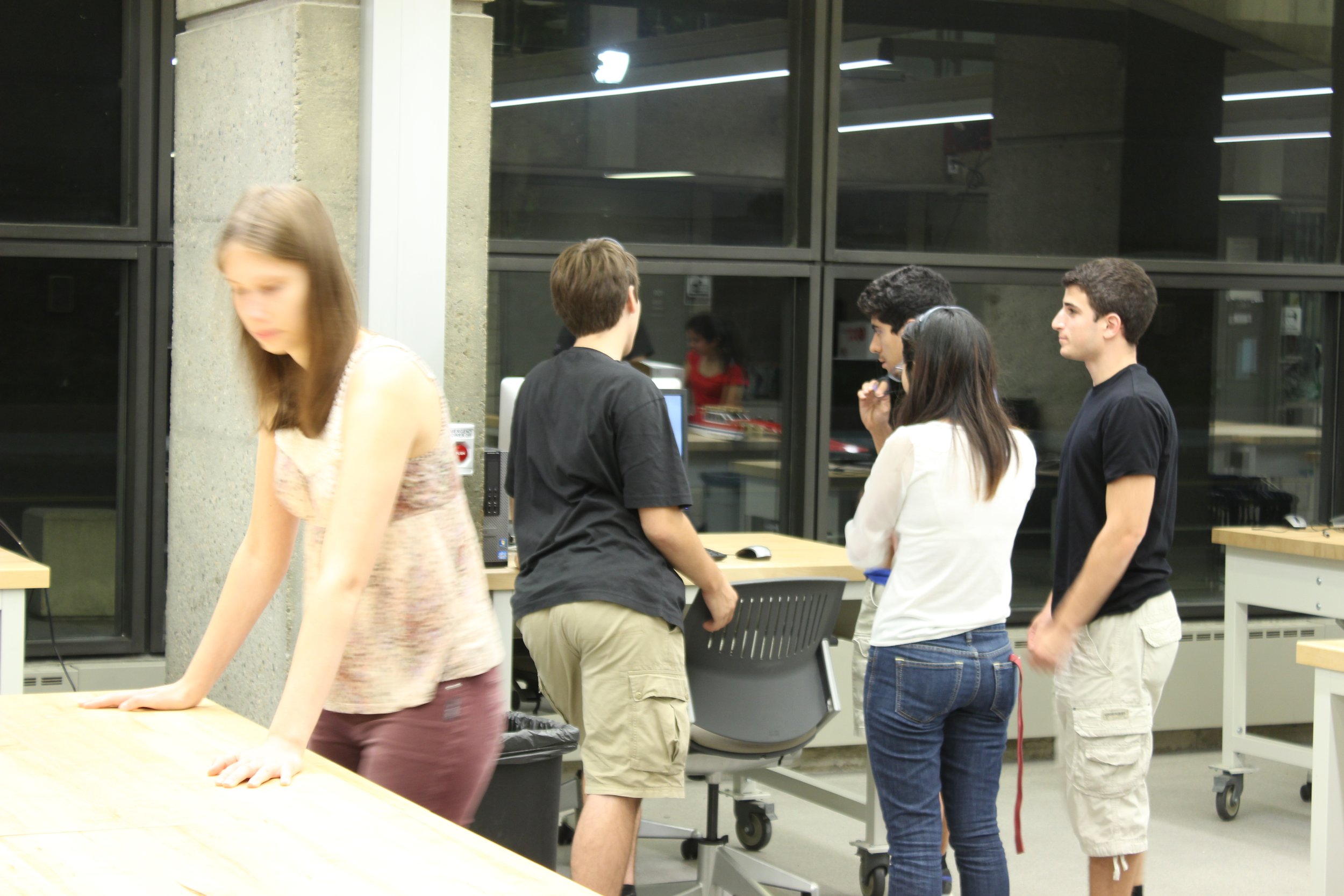Advanced UAV
In 2014, YUAA took on an advanced project for highly experienced members. The team aimed to design and build an autonomous aircraft and build on skills from the previous year's UAV project.
The team registered to compete in the Association for Unmanned Vehicle Systems International (AUVSI) Seafarer Chapter’s 13th Annual Student Unmanned Air Systems (SUAS) Competition, which took place from June 17th to 21st. The competition consisted of various flight missions, including target recognition, payload drops, and flight through GPS-bounded coordinates, to be performed autonomously by the UAV.
The team spent the first semester planning the layout of the UAV, deciding the proper equipment to order, and considering payload drop mechanisms. When asked what the most difficult task was expected to be, team captain Thomas Ryan answered that it would certainly be equipping and programming the UAV to accomplish all of the flight missions in the competition. They installed an auto pilot into the UAV and added airspeed sensors on the tip of the wings and held two test flights. One flight occurred at the end of January and another at the beginning of February, both being a huge success. To ensure safe landing in the snow during the first flight, the team built skis for their aircraft.
During the second test flight, the team tested features of the UAV’s autopilot system. Team member Antonio Martinez used the Ardupilot Mission Planner software to communicate with the receiver on the UAV. Ryan commented that they had been taking off and landing the plane with a controller, but once the UAV was in the air, he switched the setting on the remote to an automated mode, and everything else that the UAV did was completely laissez-faire. Eventually, Ryan said, the UAV would be able to take off and land on its own. In this test flight, the UAV successfully flew to designated GPS coordinate points and circled the location in a fixed given radius.
In the following months, the team aimed to take data from a camera attached to the plane and locate GPS points through advanced image processing. By doing so, the team tried to learn where the plane was and where the plane was heading in real time. Additionally, the team designed a complex algorithm process to allow the UAV to identify ground targets and drop payloads upon detection.


